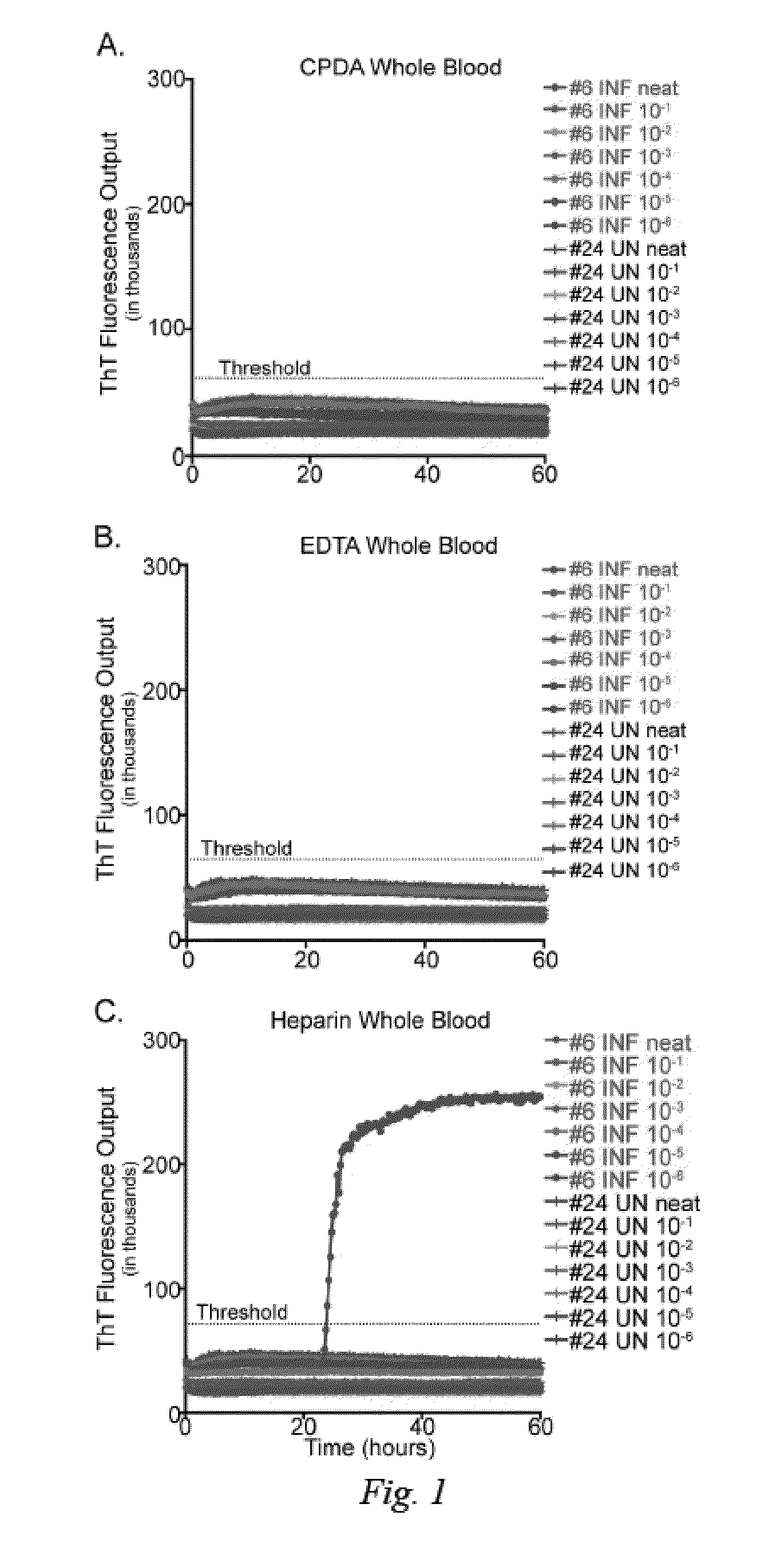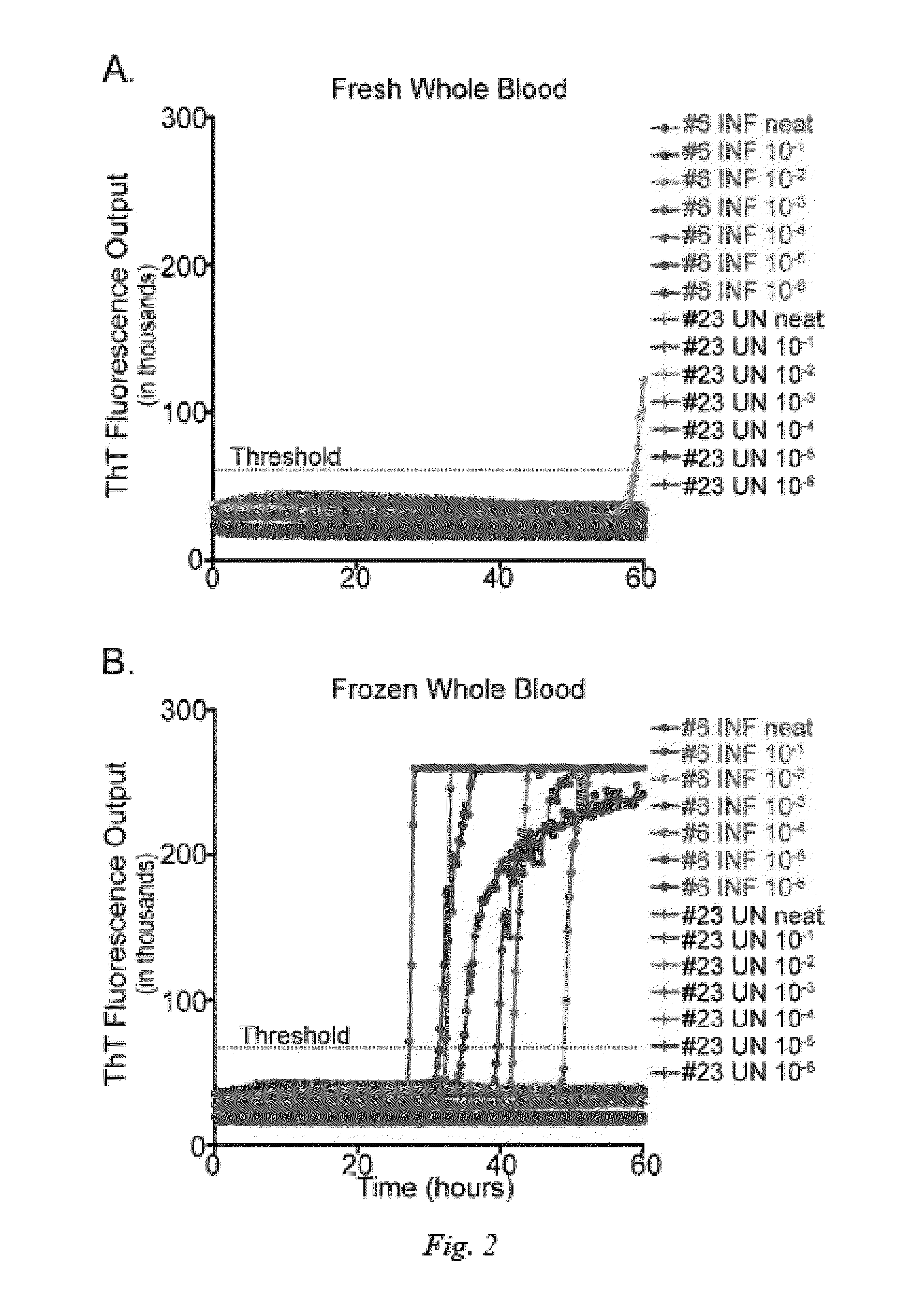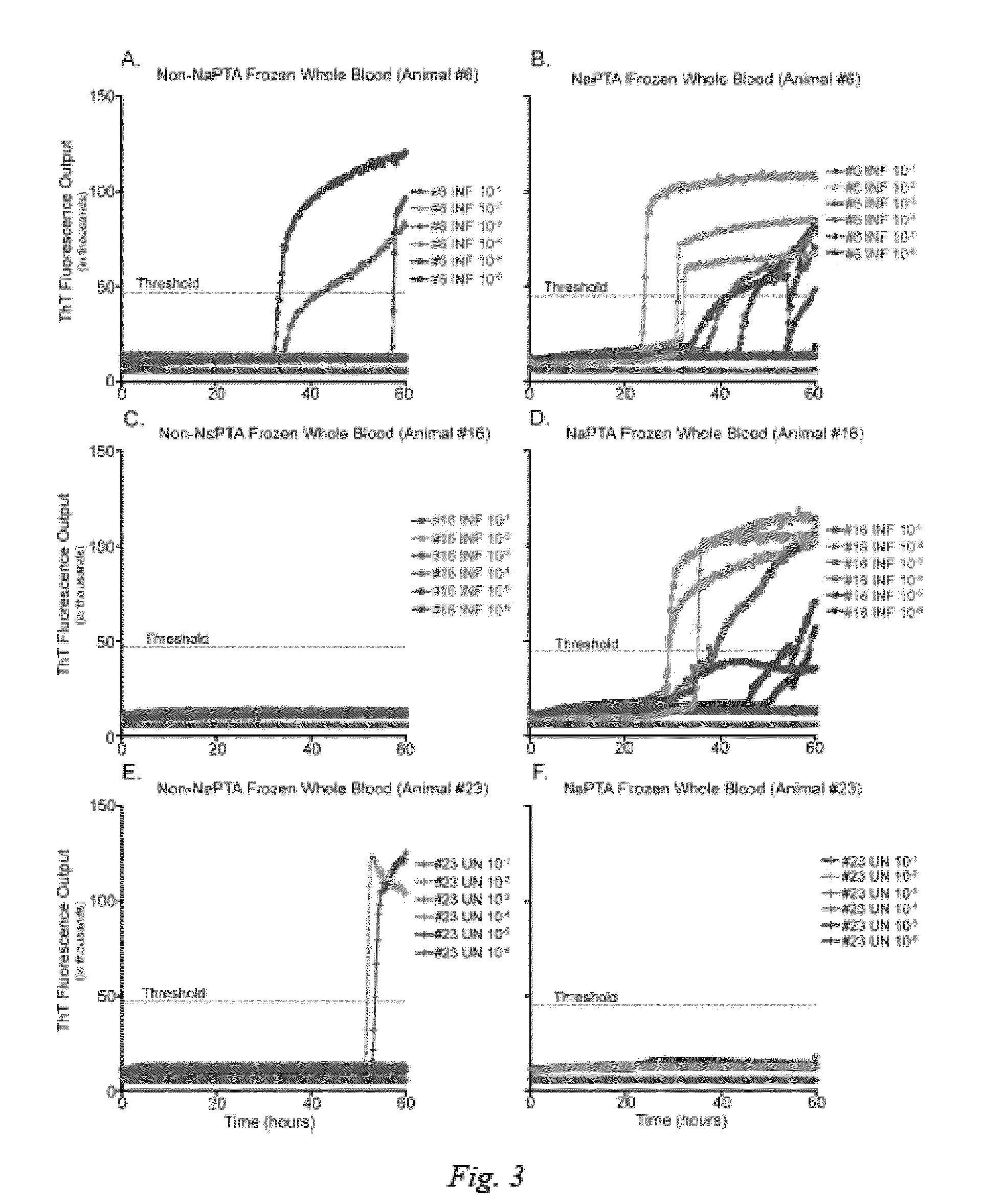In vitro detection of prions in blood
a technology of prions and blood, applied in the field of prions detection, can solve the problems of many months, animal and cost, and achieve the effect of high sensitivity and specificity and 100% specificity
- Summary
- Abstract
- Description
- Claims
- Application Information
AI Technical Summary
Benefits of technology
Problems solved by technology
Method used
Image
Examples
example 1
RT-QuIC Analysis of Whole Blood Collected in Various Anticoagulants
[0023]To determine the influence of common blood preservation reagents in in vitro PrPD detection assays, we compared the ability of RT-QuIC to amplify CWD prions in cervid whole blood preserved in CPDA, EDTA or heparin. Samples were run in serial dilutions (100-10−6) in the RT QuIC assay to determine the optimal dilution for PrPD detection. While RT-QuIC PrPC converting activity was observed in heparinized blood from CWD-infected deer (1 / 2 replicates in one dilution; 10−5), PrPC converting activity was not detected in CPDA or EDTA preserved blood from the same animal or any blood collected from sham-inoculated deer (FIG. 1). All subsequent RT-QuIC analysis was conducted on whole blood harvested in heparin.
[0024]Precedence for hematogenous spread of prions via transfusion has been well established with various TSEs, including scrapie [Andreoletti, O., et al., Highly efficient prion transmission by blood transfusion. ...
example 2
RT-QuIC Analysis of Fresh Versus Frozen Whole Blood
[0026]In order to determine if historical blood samples were adequately preserved to initiate PrPC converting activity in RT-QuIC, whole blood was collected from contemporary naïve and CWD112 infected white-tailed deer and compared as fresh versus frozen samples. Samples were processed in various dilutions ranging from undiluted to 10−6 to determine the optimal dilution for PrPD detection using frozen whole blood in the RT-QuIC assay. While PrPC converting activity was detected in fresh whole blood, blood that had been processed through the freeze-thaw procedure yielded higher and more consistent detection of prion converting activity (2 / 2 replicates in each of four dilutions) (FIG. 2). PrPC converting activity was not observed in wells containing only substrate or naïve cervid blood. All subsequent RT-QuIC analysis included heparinized whole blood that had undergone four freeze-thaw cycles.
[0027]To assess the feasibility of using h...
example 3
Effects of Sodium Phosphotungstic Acid Precipitation (NaPTA) on RT-QuIC PrPD Detection
[0028]NaPTA precipitation was applied to heparinized whole blood that had undergone freeze-thaw cell lysis in an attempt to increase both the sensitivity and specificity of the RT-QuIC assay. With the improved sensitivity and specificity provided by NaPTA pretreatment we were able to demonstrate reliable RT-QuIC results at a 10−2 dilution of CWD-infected whole blood, while NaPTA treated whole blood from a naïve individual remained conversion free (FIG. 3).
[0029]Thus, all of the remaining RT-QuIC analyses of TSE prion converting activity in historical and contemporary samples were conducted with heparinized and freeze-thawed NaPTA-treated whole blood.
[0030]It has been suggested that there are components present in bodily fluids that interfere with or inhibit prion conversion and thus in vitro detection of the aberrant form of the prion protein [Barria, M. A., D. Gonzalez-Romero, and C. Soto, Cyclic ...
PUM
| Property | Measurement | Unit |
|---|---|---|
| volume | aaaaa | aaaaa |
| total volume | aaaaa | aaaaa |
| total volume | aaaaa | aaaaa |
Abstract
Description
Claims
Application Information
 Login to View More
Login to View More - R&D
- Intellectual Property
- Life Sciences
- Materials
- Tech Scout
- Unparalleled Data Quality
- Higher Quality Content
- 60% Fewer Hallucinations
Browse by: Latest US Patents, China's latest patents, Technical Efficacy Thesaurus, Application Domain, Technology Topic, Popular Technical Reports.
© 2025 PatSnap. All rights reserved.Legal|Privacy policy|Modern Slavery Act Transparency Statement|Sitemap|About US| Contact US: help@patsnap.com



